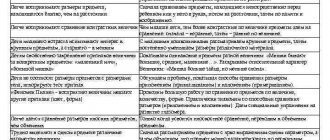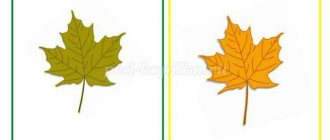Technologies for speech development of preschool children according to the Federal State Educational Standard
Modern technologies of speech development of children in the context of the implementation of the Federal State Educational Standard for preschool education
“Pedagogy should focus not on yesterday, but on tomorrow’s child development, only then will it be able to bring to life in the process of learning those processes that now lie in the zone of proximal development” L. S. Vygotsky
Dear colleagues, I bring to your attention the topic of the public lecture: “Modern technologies for the speech development of children in the context of the implementation of the Federal State Educational Standard for preschool education.”
In the Federal State Educational Standard of Preschool Education, “Speech Development” is highlighted as the main educational area. (on slide) Currently, the development of children’s speech remains one of the pressing problems of modern preschool education. And the defining moment in successfully solving the problems of speech development in preschool children is the correct choice of pedagogical technologies that would not only be adequate to the age-related capabilities of the children, but also provide the ability to easily solve speech problems in various forms of working with children. The organization of children's speech development in educational activities involves the search for effective technologies for the development of children's speech. Pedagogical technologies are a system of methods, methods, teaching techniques, educational tools aimed at achieving a positive result through dynamic changes in the personal development of a child in modern conditions. You can see the requirements for choosing technologies on the screen. In connection with the above, I bring to your attention a disclosure of the following technologies used in my practice 1. The first technology that I want to talk about is probably often used by practicing teachers - this is the method of visual modeling or (mnemonics). 1.1. Mnemonics (translated from Greek as “the art of memorization”) is a system of various techniques that facilitate memorization. What is strongly associated is remembered, but what does not form strong associative connections. - is forgotten. K. D. Ushinsky wrote: “Teach a child some five words unknown to him - he will suffer for a long time and in vain, but connect twenty such words with pictures, and he will learn on the fly.” The objectives of using mnemonic teaching aids are presented on the slide: Like any technique, work using mnemonics is built from simple to complex. First, the work uses the simplest mnemonic squares and mnemonic tracks, and then mnemonic tables are gradually introduced. To enrich their vocabulary and when guessing and making riddles, children with great pleasure use mnemonic squares and mnemonic tracks. When learning to compose stories, when retelling fiction, when memorizing poetry, mnemonic tables serve as effective didactic material. A mnemonic table is a graphic or partially graphic image of the characters of a fairy tale, natural phenomena, some actions, etc. The supporting image in the table is the image of the main characters of the fairy tale, as well as those objects, actions and phenomena that are “tied” around them. Mastering the action of visual modeling contributes to the development of children's mental abilities. The child learns to compare, generalize, group material for the purpose of memorization, speech, memory and thinking develop. One of the visual modeling techniques is a geometric diagram - Euler circles. With the help of symbols, children visually display relationships between concepts or sets of objects, laying them out in their circle. Then, at the intersection of circles (Euler circles), identical attributes of objects are identified. Children compare objects, first determining their similarities and then their differences. Euler circles are used in teaching creative and narrative storytelling. CONCLUSION: Thus, using this gaming technology in my work, I shape the social experience of children, exercise their ability to find objects that have not one, but several characteristics at once, and solve a whole class of interesting speech and logical problems that a child needs when preparing for school. 2. Next, I want to dwell on the technology of activating speech training as a means of communication (author Olga Alfonsasovna Belobrykina). According to the author of the technology, the most important prerequisite for improving the speech activity of preschool children is the creation of an emotionally favorable situation that promotes the desire to actively participate in verbal communication. The main activities of a preschooler include play and communication, therefore, play communication is the necessary basis within which the formation and improvement of the child’s speech activity occurs through the use of linguistic games. Linguistic games presented in this technology make it possible to develop various types of speech activity, each child can easily and freely demonstrate intellectual initiative, which is a specific continuation of not just mental work, but cognitive activity, not determined by either practical needs or external assessment. Dear colleagues, I offer you this exercise. Let's try to name the complete proverbs in two words. – Feeds, spoils CLICK – Labor feeds, but laziness spoils – House, walls CLICK – Houses and walls help – Family, soul CLICK – Family together – the soul is in place. Amazing! The most important condition for the development of speech is the creation of a comfortable communicative field in the family, as well as the sincerity and appropriateness of the inclusion of speech etiquette formulas in various communication situations. The introduction of speech etiquette formulas into the speech communication of preschoolers is also facilitated by special didactic family games and exercises, which are presented in the collection “System of work on the formation of speech etiquette and a culture of communication.” The common goal of both the family and the kindergarten is a well-mannered, cultured and educated person. In this collection, I have developed a system of rules for brave and persistent parents, formulas and situations of speech etiquette. I draw your attention to the slide: Today we need people who are intellectually courageous, independent, original thinkers, creative, and able to make non-standard decisions. Pedagogical technologies for speech development can not only change the processes of education and training, but also improve them.
These technologies have a significant impact on the development of coherent speech in preschool children.
Presentation on the topic: Modern technologies for children’s speech development in the context of the implementation of the Federal State Educational Standard for preschool education
We recommend watching:
Summary of a lesson on speech development for the senior group Consultations for preschool teachers. Using oral folk art for speech development Speech development in preschoolers through play Critical thinking technologies for speech development in preschoolers
Similar articles:
Games for the development of speech breathing in the middle and senior groups
Speech development in children 3-4 years old with developmental disabilities based on Suteev’s fairy tales
Stages of speech development in a child
Tasks in pictures for speech development for children 3-5 years old
Exercises for speech development in children 4-5 years old
Child speech development in preschool age
The transition to non-situational communication in preschool age, the complication of activities and the expansion of social contacts contribute to the development of children’s speech. The communicative and planning functions of language begin to develop, and it becomes a tool of thinking.
In preschool age, qualitative and quantitative changes occur in the child’s vocabulary. Quantitative growth of vocabulary depends on children's learning conditions, which causes significant individual differences. In preschool age, the average child's vocabulary is 1200 words, and the active vocabulary of a child in older preschool age reaches 3000-3500 words.
At the same time, types of words are represented differently in the vocabulary of preschoolers of different ages and with different levels of development of communicative abilities. Thus, children with a dominant situational-business form of communication have a large number of nouns in their vocabulary, adjectives are either absent or show the attributive properties of objects (color and size), almost all verbs denote only certain actions. Children with a dominant non-situational-cognitive form of communication have more words that reflect the qualities of surrounding objects; there are adjectives that define aesthetic, ethical and emotional qualities, and verbs that denote volitional and intellectual actions. The general pattern of vocabulary development is that children first master the names of visually represented groups of objects, properties and relationships, which is due to the visual-figurative nature of preschoolers’ thinking. There are almost no abstract concepts in the vocabulary of preschoolers.
Preschool children gradually learn to form phrases and sentences in accordance with the rules of grammar. Already at preschool age, the child uses basic grammatical rules: Changing words by cases, numbers, persons, using all forms of verbs, using simple and complex (related and unrelated) sentences. Gradually, the child masters the system of morphological means of grammatical categories, types of declension and conjugation, types of word composition and word formation, and learns to compose more complex sentences. However, children's speech is characterized by a large number of grammatical errors.
The speech of preschool children is characterized by word formation, which expresses an insufficient level of mastery of various grammatical forms of their native language, and in which children’s ability to form neologisms is manifested. There are three main principles by which children form new words:
- A part of a word acts as a whole word;
- the ending is added to the root of the word;
- a word consists of elements of two other words.
Special games and activities aimed at speech development
The advantage of special games and activities is that they specifically create conditions in which children can develop different aspects of language.
Special games and events of this nature include:
- various games (singing games, round dance games, games with toys, dramatizations, onomatopoeic games, etc.).
- Reading aloud and telling fairy tales, poems and stories, encouraging children to retell what they hear;
- View and discuss illustrations for works of children's literature.
- Showing slide films;
- Game actions with subject and plot pictures;
- Solving simple riddles with or without visual aids;
- games aimed at developing fine motor skills. All games can be used to develop language.
For example, games, nursery rhymes (“Ladushki”, “Magpie-Crow”, “Po
cones)" round dance games ("Loaf", "Blow a Bubble") are useful because while listening to an adult’s speech, the child relies on his own actions and movements. They include repeating words with unique endings ("stomp-stomp", "da-da", etc.) and actions. It is important that during such games emotional contact is easily established with the child; this makes the language easier to understand and imitate.
Phonemic games develop phonemic awareness, pronunciation and intonation.
Games with story toys and dramatization games contribute to the development of dialogues, enrich vocabulary, intonation and grammar of the language. During these games, conditions are created for the development of planning and regulating functions of speech.
Unlike ordinary life situations, in special “language” games and activities, adults can intentionally create certain difficulties for the child, which requires special mobilization of attention. Thus, it is possible to create conditions in which children have to distinguish between similar adult calls, but they involve different actions. For example, when playing ball with a child, the teacher suggests: “Throw the ball into the basket. Now throw the ball into the basket." Or, when playing hide and seek with a doll and a dog, offer to hide the toy behind a chair, under a chair, etc.
Reading children's books with an adult, looking at pictures and colorful illustrations is extremely useful for language development. An adult reads to the children, shows them illustrations, asks questions if they find it difficult, names objects, characters, their actions, and encourages the kids to repeat speech patterns. You can look at photographs in different ways: An adult names objects and figures and asks the child to show them. These sessions should be done individually or with a small group so everyone can join in the conversation.
Watching films helps develop the ability to listen to an adult who accompanies the child's story, pausing at each image in detail. It is best to show fairy tales that contain repetitions of the same words, against the background of which new words are introduced (“Kolobok”, “Turnip”, “Teremok”, “Ryaba Hen”). This helps the child learn new words and reinforce words he already knows.
Patterns of speech development in early childhood
Early childhood is a sensitive time for language development. At the beginning of early childhood, the child operates with the so-called “autonomous” language - a unique child’s language, which clearly differs from the language of adults in sound form and meaning. The child uses words that are completely different from the corresponding words of adults, words-fragments of adults’ words, words-punctuation, onomatopoeic words. Autonomous speech is characterized by ungrammaticality, ambiguity and situationality. The words are not connected into sentences, but merge with each other like interjections, reminiscent of a series of incoherent exclamations. As a rule, autonomous speech transforms and disappears quite quickly, within six months. Words of “autonomous” speech are replaced by words of “adult” speech. A quick replacement of “autonomous” speech is possible only when the child is in full communication with an adult.
As children master a language, they become familiar with its phonetic side. The pronunciation of words gradually becomes more correct, which contributes to the assimilation of the sounds of the native language. Mastering the phonetic system of a language includes two interrelated processes:
- Formation of phonemic hearing (distinction between vowels and then consonants - hard and soft, dull and sonorant, hissing and whistling - appears early);
- Formation of pronunciation of speech sounds.
Under favorable upbringing conditions, by the end of early childhood the child learns all the basic sounds of speech. The main patterns of speech development are presented in Table 6.1. However, it should be remembered that the stages of language formation and the time boundaries of these stages are quite arbitrary, and many children have significant individual differences in language development. The number of words that the child understands grows quite quickly - passive vocabulary. By the age of two, children understand almost all words spoken by adults in relation to environmental objects. A child's understanding of an adult's instructions allows him to direct his behavior using language. In the first years of life, significant changes occur in the understanding of language: children understand not only the instructive speech of an adult, but also the narrative one. The beginning of the development of a child’s active speech depends primarily on the characteristics of the relationship between adults and the child, on the nature of communication between them. If the surrounding macho people talk to the child and do not stimulate the active use of words, a delay in speech development may occur.
Under favorable upbringing conditions, a significant shift in the child’s speech development is most often observed in the middle of the second year of life, when, simultaneously with an increase in the number of words used, the first sentences consisting of two or three words appear. In most cases, they consist of words that are combined into a sentence without changing their form. In two-word sentences, connections between words are usually of two types: the subject and its action (“the doll is sleeping”), the action and the object or place of action (“give me the apple”).



